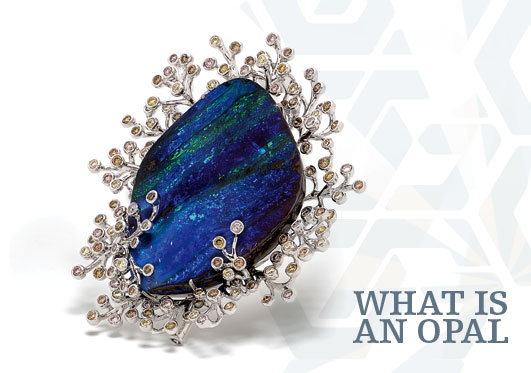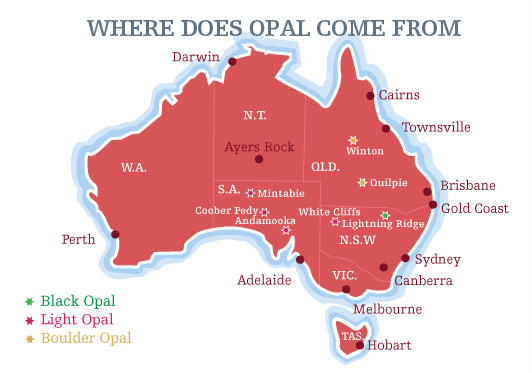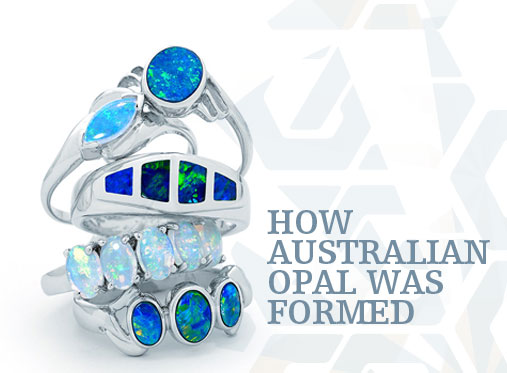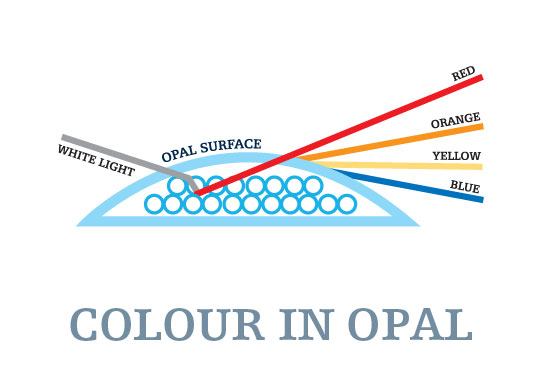About Opal
What is an Opal?
Opal is from the Greek “Opallos” meaning to see a change of colour”. Each Australian opal is unique and the different varieties offer a spectacular choice of colour, shape and size. When rotated, the opal displays a constantly changing interplay of fiery colours. The finest quality stones can command prices similar to the finest emeralds, rubies and diamonds.
Opal is not only one of the world’s most beautiful precious gemstones; it is also one of the worlds rarest. Opals rarity has made it a desirable and at times divisive part of many cultures over thousands of years.
Technically, opal is non-crystalline silica (in a rigid gel form) containing approximately 5% to 9% water. Non-crystalline silica is similar to quartz and sand. On the Mohs Scale of Hardness, a scientific scale of the relative hardness of minerals, opal rates at around 5.5 to 6.5. As a comparison, diamonds rate at around 10, sapphires 9, quartz 7 and pearls 3 - 4.

Where does opal come from?
96% of the world’s precious opal comes from isolated areas in the outback of Australia. A small amount of precious opal is found in Brazil and Mexico, the complexity of colour and pattern of these opals is incomparable to that of Australian precious opal. Common opal can be found in a limited number of countries, and is widely found in opal regions but contains no colour. Australian stones can easily be distinguished by their brilliance and play of colour.
The opal fields of Australia are spread around the eastern regions of central Australia, across the states of Queensland, New South Wales and South Australia -
- Black Opal comes from Lightning Ridge in New South Wales.
- Light or White Opal is mined principally from the South Australian fields of Mintabie, Coober Pedy and Andamooka.
- Boulder Opal is from Central Queensland in the areas surrounding the townships of Quilpie and Winton.

How Australian opal was formed?
About 65-140 million years ago during the Cretaceous period, the age of the super continents Pangaea and Gondwana, central Australia was covered by a giant inland sea. Dinosaurs were the major fauna of the earth at this time; opalised fossil remains of dinosaurs are a legacy of this period.
As the inland sea retreated, silica rich sands were deposited, onto what is now basically a desert area. Weather conditions changed the sand sediments released large quantities of soluble silica, creating a silica gel.
The silica gel seeped down through the sedimentary structure of the area, into its cracks and crevices, gradually hardening through natures heating and moulding processes, resulting in the creation of opal. Due to the mineral content of the host rocks in which the hardening process occurred, which affects the body tone of the opal; different types of opal were formed.

Color in Opal
Opal is composed of silica spheres which are packed together. In precious opal the arrangement of the spheres is an orderly three dimensional grid, because of the special pattern of spheres it is the only gemstone that has the unique natural ability to diffract light.
Light passing through the transparent spheres is scattered by the array of voids. White light is diffracted and split into its various colours at different angles.
The colour visible from the opal is dependent on the size of the spheres. Blue and violet colours are created by spheres that are smaller compared to the larger spheres and voids which create red and orange colours.

